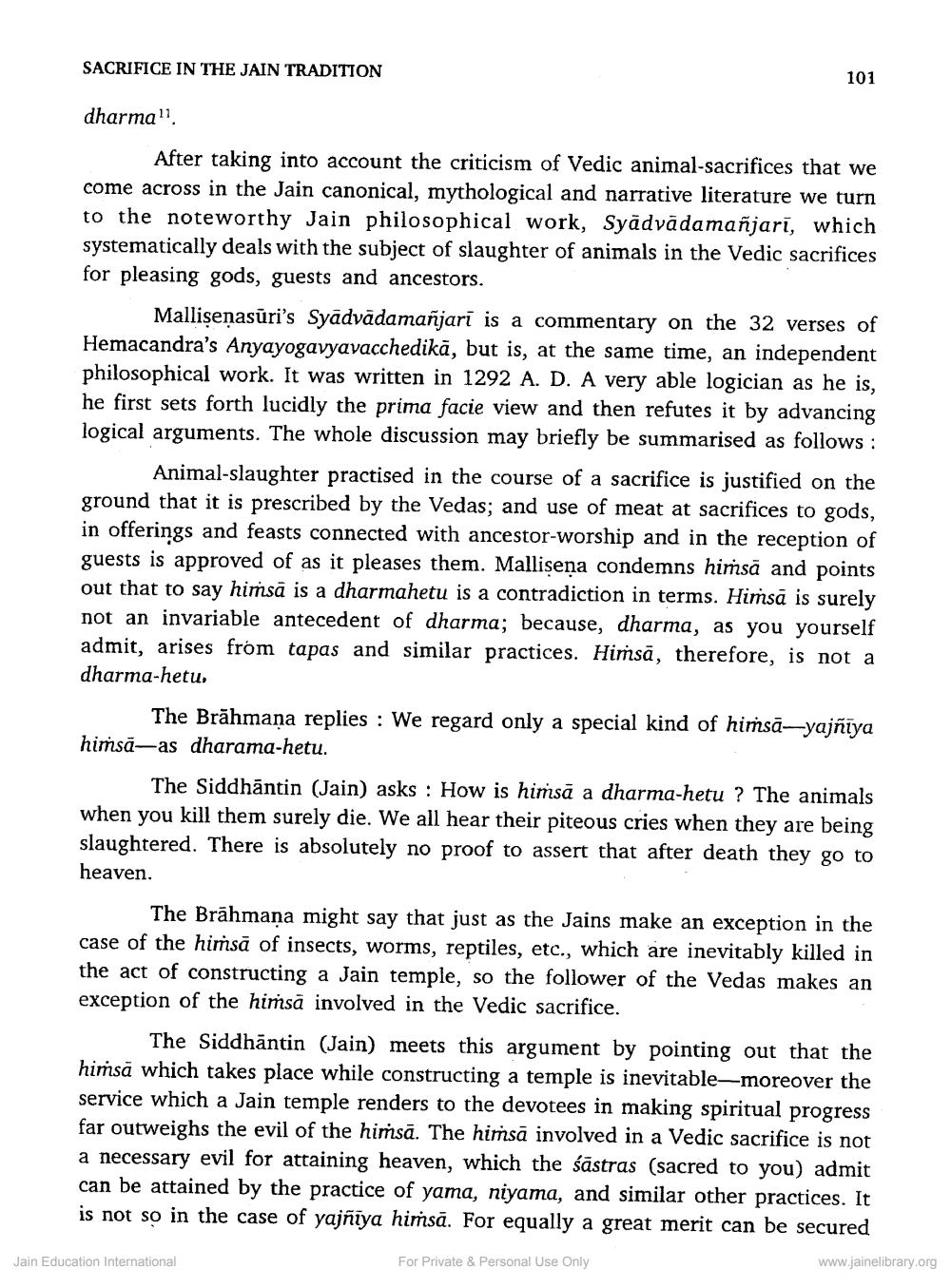________________ SACRIFICE IN THE JAIN TRADITION 101 dharma' After taking into account the criticism of Vedic animal-sacrifices that we come across in the Jain canonical, mythological and narrative literature we turn to the noteworthy Jain philosophical work, Syadvadamanjari, which systematically deals with the subject of slaughter of animals in the Vedic sacrifices for pleasing gods, guests and ancestors. Mallisenasuri's Syadvadamanjari is a commentary on the 32 verses of Hemacandra's Anyayogavyavacchedika, but is, at the same time, an independent philosophical work. It was written in 1292 A. D. A very able logician as he is, he first sets forth lucidly the prima facie view and then refutes it by advancing logical arguments. The whole discussion may briefly be summarised as follows: Animal-slaughter practised in the course of a sacrifice is justified on the ground that it is prescribed by the Vedas; and use of meat at sacrifices to gods, in offerings and feasts connected with ancestor-worship and in the reception of guests is approved of as it pleases them. Mallisena condemns himsa and points out that to say himsa is a dharmahetu is a contradiction in terms. Himsa is surely not an invariable antecedent of dharma; because, dharma, as you yourself admit, arises from tapas and similar practices. Himsa, therefore, is not a dharma-hetu, The Brahmana replies : We regard only a special kind of himsa--yajniya himsa--as dharama-hetu. The Siddhantin (Jain) asks : How is himsa a dharma-hetu ? The animals when you kill them surely die. We all hear their piteous cries when they are being slaughtered. There is absolutely no proof to assert that after death they go to heaven. The Brahmana might say that just as the Jains make an exception in the case of the himsa of insects, worms, reptiles, etc., which are inevitably killed in the act of constructing a Jain temple, so the follower of the Vedas makes an exception of the himsa involved in the Vedic sacrifice. The Siddhantin (Jain) meets this argument by pointing out that the himsa which takes place while constructing a temple is inevitable--moreover the service which a Jain temple renders to the devotees in making spiritual progress far outweighs the evil of the himsa. The himsa involved in a Vedic sacrifice is not a necessary evil for attaining heaven, which the sastras (sacred to you) admit can be attained by the practice of yama, niyama, and similar other practices. It is not so in the case of yajniya himsa. For equally a great merit can be secured For Private & Personal Use Only www.jainelibrary.org Jain Education International




